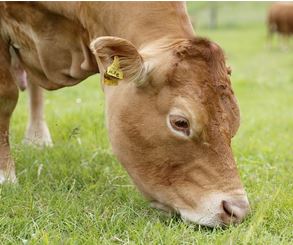



Ten Ways to Run More Cows on the Same Grass
With pasture shrinking and cows needed to be added to the national herd, a South Dakota expert gives ranchers ten ways to make their grass go further.
Cow-calf producers in South Dakota and across the country face a dilemma: On one hand, the market is signaling for more numbers of feeder calves; however, losses in grazing resources over the past decade limit how much the industry can grow using traditional management practices.

This is according to cow/calf extension specialist Warren Rusche, who writes that new challenges require new or different ways of thinking.
Here are ten options to consider to increase the available feed supply for a cow/calf ranch.
Make Better Use of the Grass We Have
- 1 Fertilize When Appropriate – for introduced, cool-season species in planted pastures this can be an effective method of increasing production.
- 2 Rest, Rotation, and Grazing Management – introducing rest periods into a grazing system can improve plant vigor and resiliency and may allow for more head days per acre.
- 3 Improve Grazing Distribution – improved water access or moving mineral feeding sites encourage cattle to find underutilized areas.
- 4 Match Grass Growth Patterns with Grazing Pressure – utilizing pastures at the correct stage of production.
Reducing Demands on Pasture
- 5 Early Weaning of Calves – saves the forage that the calves graze and reduces the nutrient requirements of the cows.
- 6 Supplemental Feeding on Pasture – substitute harvested feeds or by-products for grazed plants.
- 7 Reduce/Eliminate Pasture Entirely (Drylotting or semi-confinement) – use low-cost, properly supplemented crop residues based diets to replace summer grazing.
Consider early weaning calves to reduce nutrient requirements of cows
Develop New Grazing Resources
- 8 Annual Forage Options – crops such as small grains, millets, and sorghums can be planted as part of a crop rotation with grazing livestock used as the harvest method.
- 9 Cover Crops – especially useful to extend the grazing season into the fall.
- 10 Crop Residues – vastly underutilized feed resource in the crop growing regions of the Midwest and Plains.
This list is by no means the last word and there are certainly other potential solutions.
These are simply a starting point in the conversation for ranchers that are searching for alternative systems to expand or maintain their business.



